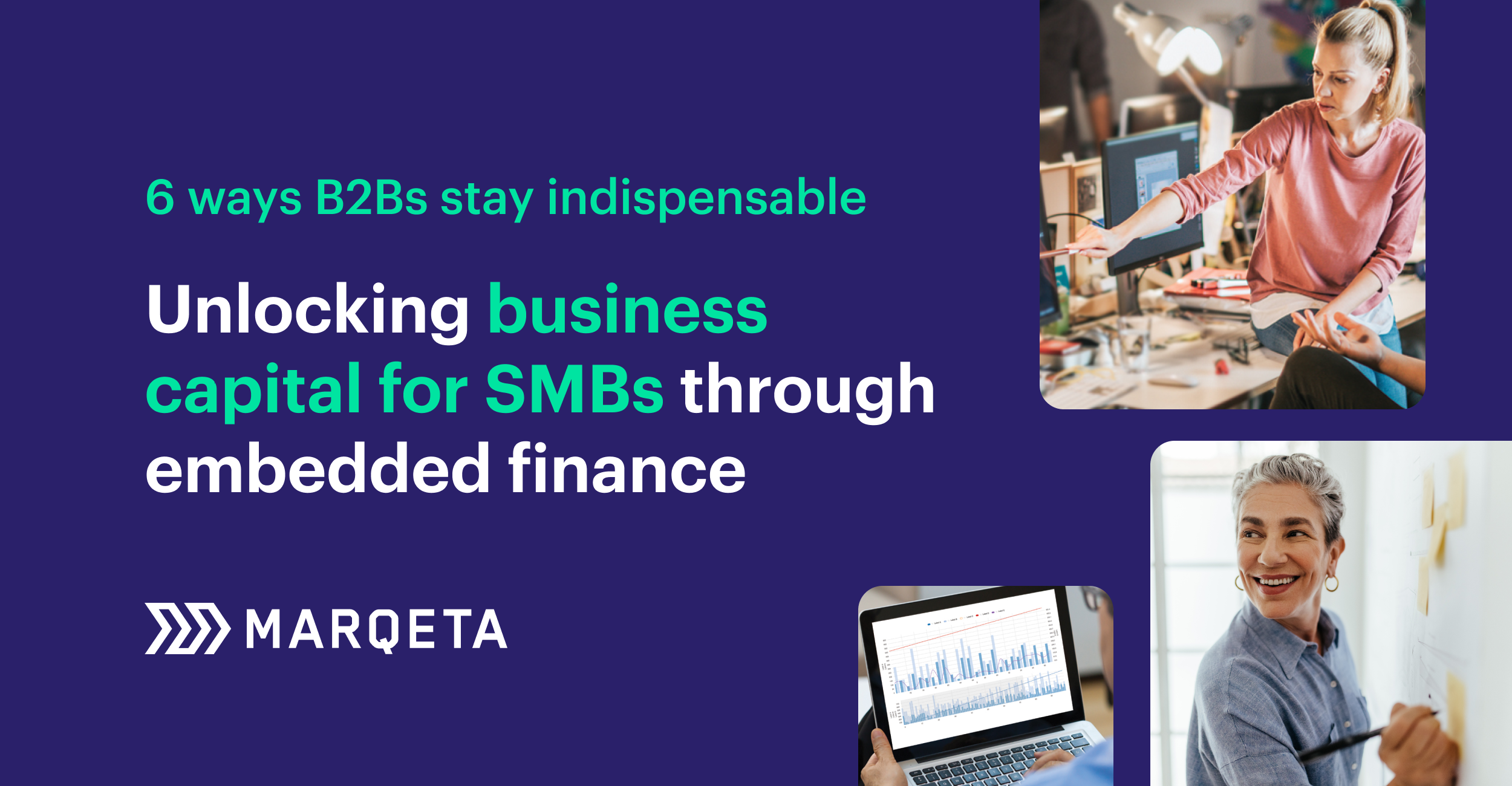What springs to mind when you think about embedded finance? And have you thought about how it could transform your business?
If not, you’re reading the right blog.
Embedded finance enables companies to integrate banking services and products directly into their channels, applications, or e-commerce platforms.
From an end user perspective, it means the ability to make financial transactions part of a native digital experience, whether that’s on a smartphone, website, or even a car infotainment system.
The reason it’s gaining traction now is because financial services - despite consolidation of big banking brands - are becoming more decentralized.
As a result, a growing number of non-financial businesses are offering financial functionality, underpinned by modern payments technology.
An innovative way to transform user journeys
using modern financial tools
using modern financial tools
To accelerate this exciting trend, Marqeta has teamed up with technology experts at Babel, a global leader in digital transformation.
Among its many skills and talents, Babel specializes in embedded finance innovation and has defined three strategic areas that brands need to perfect if their proposition is to succeed. These are:
- Payment services and business models that enable flexible payment and financing capabilities.
- User experience and engagement strategies designed to reduce friction in customer journeys and improve sales conversion.
- Financial inclusion tools to broaden access to financial services while promoting financial literacy and good outcomes for customers.
Technology with countless use cases for every vertical
Ángel Cuenca Calvo, Business Manager at Babel, says that no matter the scenario, there is a recurring theme in embedded finance.
“The common denominator is that payments have to act as a catalyst for a strategy to reduce friction at the most critical moment of the purchase funnel, and to foster engagement with the customer,” Ángel said.
This approach has been hugely successful in the fashion retail industry. Yet it is also proving increasingly effective for memberships and rewards programs, as well as value-added services such as insurance and subscriptions.
Additionally, major players in the transport and mobility industry are seeing embedded financial services offerings as a way of winning new business. Firms are successfully raising average ticket values and luring customers away from competitors.
Ángel summarized: “By integrating financial services into a transport value proposition, early adopters of embedded finance have been able to get ahead in innovation. We’ve seen a number of global mobility providers using technology to combine different transport methods and create a seamless door-to-destination journey.
“This approach pools the offerings of associated companies to provide a superior customer experience, which includes the ability to evaluate alternatives and make a quick, integrated purchase, whether as a single payment or a flexible recurring payment.”
How payments innovators are driving the shift to embedded
Such paradigm-shifting innovations would be impossible without the underlying connectivity enabled by embedded finance.
This is where Marqeta, as a provider of embedded finance technology, comes in.
CEO Simon Khalaf describes how these tools are transforming financial journeys in an engrossing interview with Tearsheet’s Zack Miller.
"The beauty about embedded finance is that it can be applied everywhere money flows, from an employee to a consumer, from a consumer to consumer, from a consumer to a retailer, from a retailer to its suppliers. And from a retailer to the employees," Simon explained.
Innovation, he argued, was being driven by an upcoming "generation that has never been inside a bank branch."
"I would say in the next decade this generation will have never touched cash as a bank note, and most likely, in 10 years, they're not going to touch a piece of plastic. So the only engagement they're gonna have with financial services is through an iPhone application or a widget or an Android," he predicted.
People will go to the brands they love for financial services - because they've excelled at consumer experience. And banks will play a vital treasury and investment role in the embedded ecosystem, Simon said.
Not just sales conversions, embedded finance can be a tool for social cohesion too
Evidence of a world without bank branches can be found in remote areas of Spain, where embedded finance is widening access to banking services. For example, many of the country’s nearly-8,000 municipalities are without a bank branch. However, they are likely to have a post office, supermarket or a town hall.
These local businesses and institutions are harnessing the power of embedded finance combined with in-person support to drive financial inclusion in hard-to-reach communities.
Isn’t it time to embed financial innovation in your business?
It’s incredible to think that much of this innovation originates from retail initiatives that began more than a decade ago. These include Black Friday in the West and Single Day in the East, which now generates upwards of $150 billion annually on e-commerce giant Alibaba Group’s various platforms.
Indeed, global retail brands have demonstrated that by bringing a new dimension to everyday transactions, businesses can transform customer experiences and open up a whole new world of sales possibilities.
And there’s no reason why your business couldn’t do this too. To find out how, talk to Marqeta today - europe@marqeta.com




